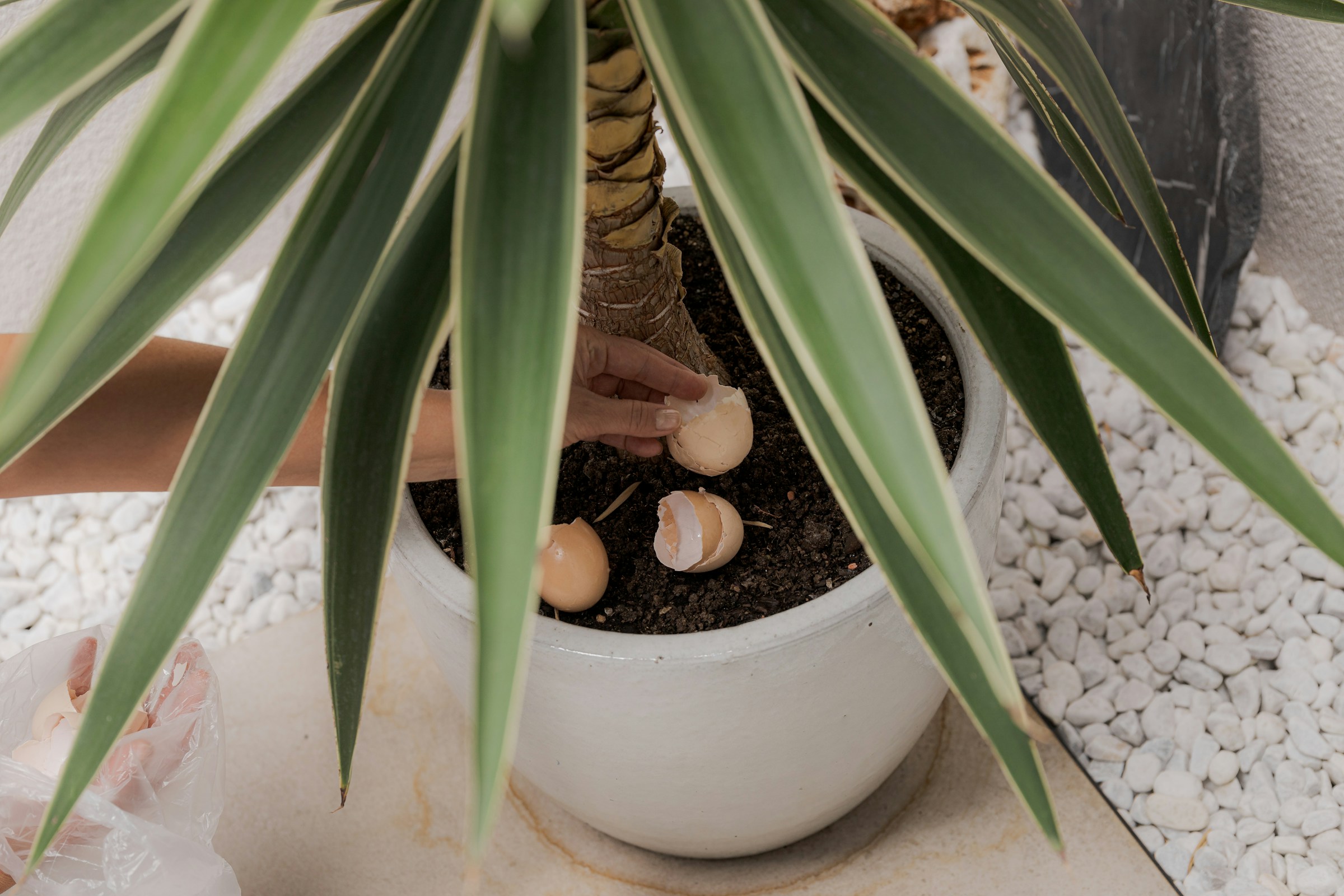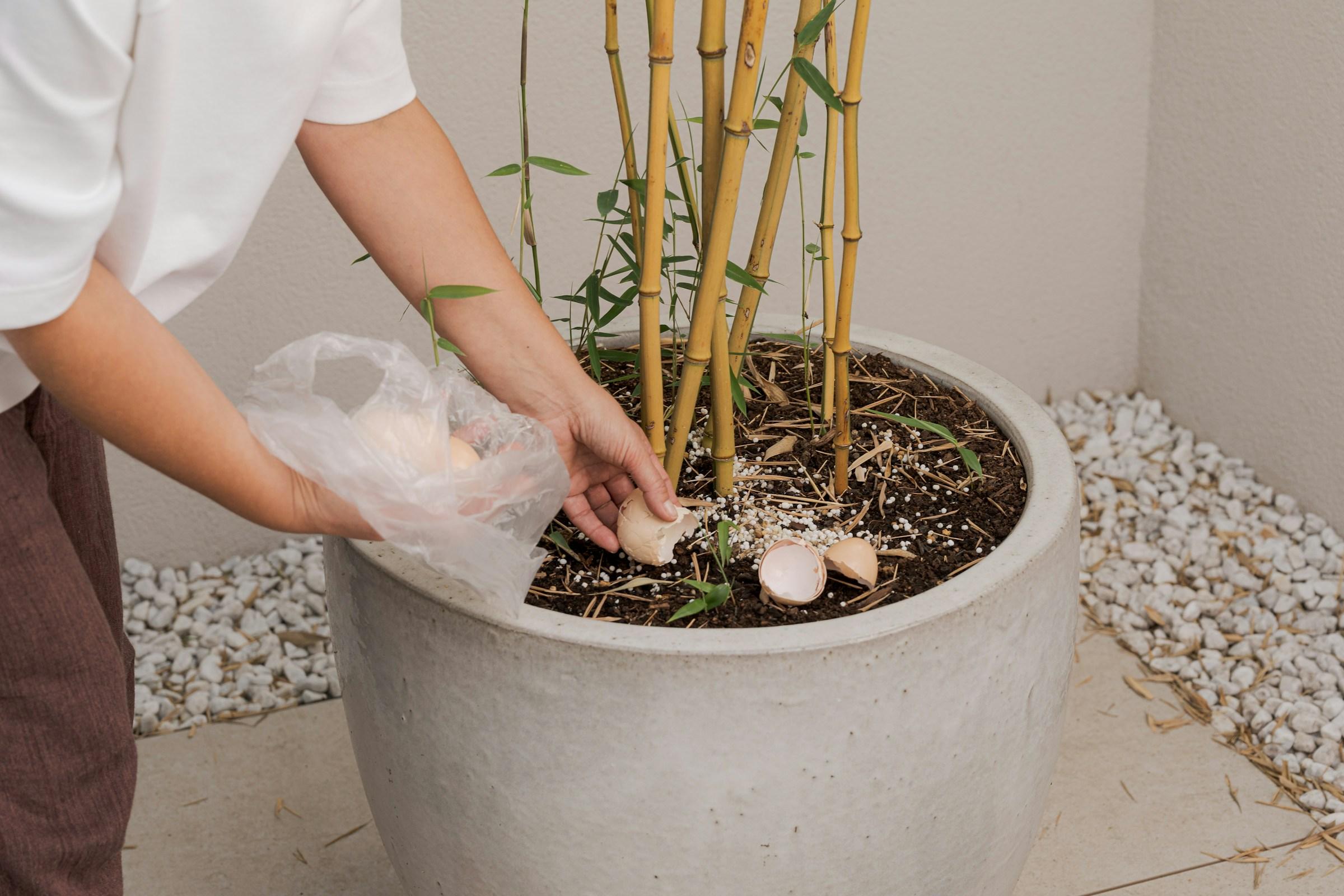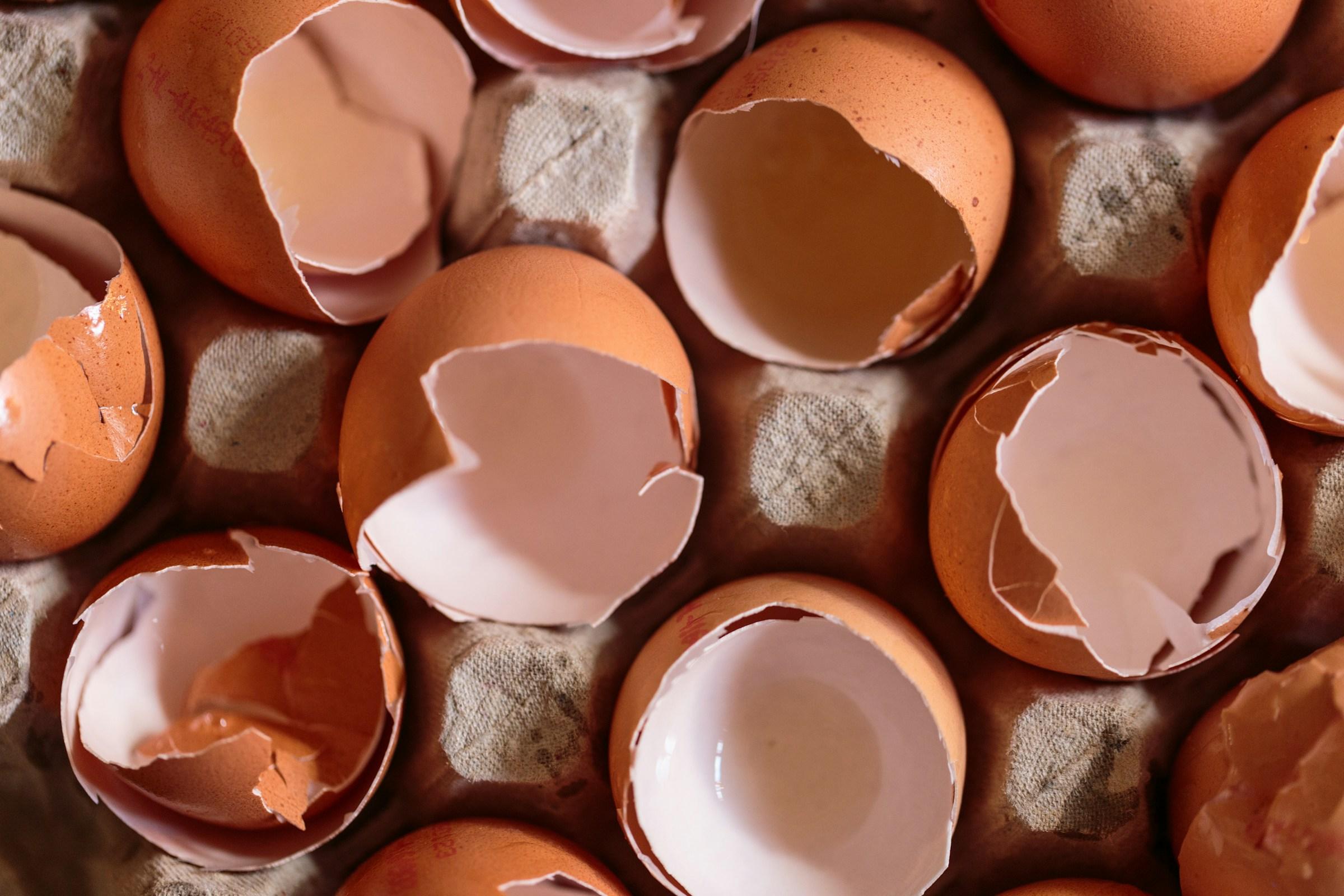You crack an egg, rinse the shell, and hesitate over the bin. In that small pause lives a simple question that many home gardeners ask. Is this thin cup of chalky white only waste, or is it quiet help for the plants on the balcony and the beds by the fence. The idea of using shells feels thrifty and kind. It also carries a hopeful promise that something ordinary from the kitchen can return to the soil with care.
An eggshell is mostly calcium carbonate. That single fact explains both the appeal and the limits. Calcium is a building block for cell walls and root tips. It keeps new growth neat and helps tissues hold their shape. Over months and years a shell can add a trace of calcium back into soil, but it never acts like a quick rescue. Soil life must break it down first. Moisture, warmth, and surface area all matter. A whole shell is a keepsake, while a fine powder is a practical contribution. When shells are ground into dust, more edges meet microbes, and the soil can take in the mineral at a gentler, faster pace.
Many gardeners connect shells with tomatoes because of the blemish known as blossom end rot. The fruit darkens at the base, and people blame low calcium. The story is more tangled than that. The plant often has calcium in the soil already, but erratic watering blocks movement of that calcium into the fruit. A layer of shells on top will not repair a summer of dry spells and sudden floods. Better watering is the real fix, and shells can play a supporting role over time. The lesson here is simple. Think of shells as part of a long routine rather than a cure.
The second claim centers on pH. Calcium carbonate can nudge a sour mix toward neutral, but the change is slow and small. If your potting soil already sits near neutral, you will not see much movement. If your mix trends acidic, a pinch of shell powder folded in at repotting can help keep things steady. This is a gentle buffer rather than a dramatic shift. The pace suits gardeners who prefer long arcs and quiet improvement.
Texture may be the most underrated gift. When shells are ground to dust, they vanish into the structure of the mix. When they are crushed into a fine grit, they behave like a partner to perlite. They do not replace it, but they add little interruptions that keep dense soil from packing down. Water slips through with less drama, and air can reach roots with less struggle. The result is steadier growth and fewer episodes of soggy pots that never quite dry.
Pest control is where myths grow fastest. It is common to see a ring of broken shells around lettuce with the hope that slugs will stay out. Sometimes that barrier works for a short spell, but rain softens edges and slugs do not give up easily. If you enjoy the ritual, keep it. If you need results, rely on methods that do not waver, such as copper tape on the rim of raised beds, early morning hand picking, or beer traps set at soil level. Shells can decorate a defense, but they rarely define it.
The compost bin is where shells make the most dependable return. A pile that heats up, gets turned, and stays moist will grind down organic scraps into a dark, crumbly mix. Shells take longer than carrot peels or coffee grounds, so it helps to crush them before they go in. Even after months you may still see pale flecks in finished compost. Those flecks keep working for seasons as they break down slowly in garden beds. They add traces of calcium and help loosen heavy soil. In this way breakfast becomes a note in the long memory of the garden.
Container gardeners live by the quality of their mix, and shells can play a small role here as well. Fresh potting soil starts light and springy, then slumps as roots, salts, and repeated watering compress the structure. A tablespoon or two of shell powder per gallon of fresh mix offers a nudge in the right direction. The amount is small for a reason. More does not help more. Too much powder makes clumps. A light touch keeps the mix balanced and keeps roots happy.
Seed starting inside a shell looks charming in photos but rarely works well in practice. Shell cups are cramped, hard to water, and not easy to label. If you want to try it, punch a drainage hole, fill with a lean seed mix, and transplant as soon as roots knit. Crack the shell gently at planting to prevent a tight ring that can constrict growth. The plant will not care about the container once it finds real soil.
People also talk about “eggshell tea,” which is simply soaking shells in water and pouring that water on plants. Since calcium carbonate hardly dissolves in cold water, the result holds only trace minerals. If the ritual prompts you to water on schedule, the routine itself helps the plant. The chemistry is modest. Your watering can is the true tool.
Clean handling matters. Rinse shells, let them dry, and bake them lightly if you plan to store a batch in a jar. A short bake keeps odors down and deters pests. It also makes grinding easier because brittle shells turn to powder with less effort. The goal is a quiet, clean habit that never invites flies, mice, or curious pets to explore the bin.
Indoor plants ask for even more restraint, since the soil lives in a closed loop with fewer microbes and less temperature swing. A thick layer of shells on top of a pot traps moisture and can invite fungus gnats. If you use shells indoors, mix a small pinch of powder into the soil during repotting and then trust your watering schedule. Most indoor problems begin with too much water and not enough light, not with a lack of calcium.
Outside, timing matters. Early spring is a good moment to blend shell powder into garden beds before planting. During midsummer, a top dressing acts more like a promise to the future than a solution for the present. By the time microbes unlock the minerals, the cucumbers may be past their sprint. Think next season, not next week. Patience forms the backbone of any soil practice that tries to work with biology rather than against it.
There are limits to respect. If a soil test shows high calcium, you do not need more. If your tap water is hard, your plants already receive a steady supply of dissolved minerals. If leaves curl or growth stalls, check watering and root health before you reach for any supplement. A plant is an honest reporter. It tells you what is wrong if you observe the whole scene, not just a single symptom.
What eggshells truly offer is a texture of attention. They invite you to notice what you eat, what you throw away, and how small acts can travel from the kitchen to the garden and back to the plate. They teach the pace of change in soil, which is never immediate. They fit into a routine that values tiny, repeated gestures over grand fixes. When you grind a handful into powder and fold it through compost or a potting mix, you practice care that does not announce itself. Yet over seasons it leaves a trace that roots can feel.
The garden rewards this kind of patience. Basil leans toward light because you turn the pot each morning. Tomatoes thrive because you water on time. Soil gathers strength because you keep adding organic matter and never let it starve. Shells join that patient chorus. They cannot replace the basics, and they do not sparkle with instant results. They contribute in steady ways that build a kinder home for roots.
In a world of hacks and headlines, that can feel underwhelming. It is also the reason many gardeners keep a jar by the sink. Not for a miracle, but for a ritual that turns ordinary waste into slow, useful grace. If you make the shell small, keep the habit clean, and pair it with consistent watering and diverse compost, your plants will thank you in their only language. Leaves that hold their shape. Roots that roam without effort. A garden that becomes easier to care for each year, not harder. That is the real benefit of eggshells for plants. It is not a fix. It is a rhythm, and a very human one at that.







